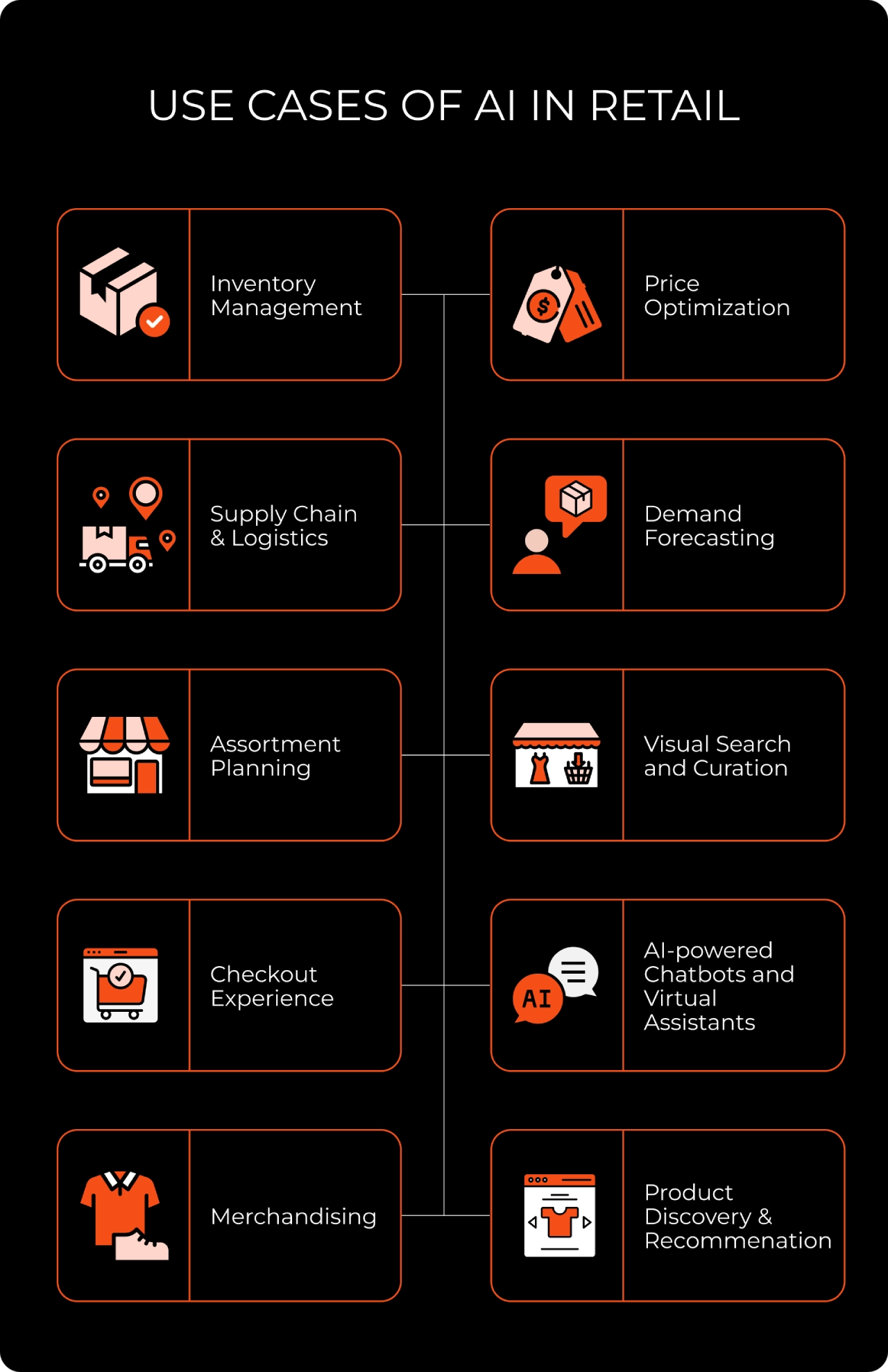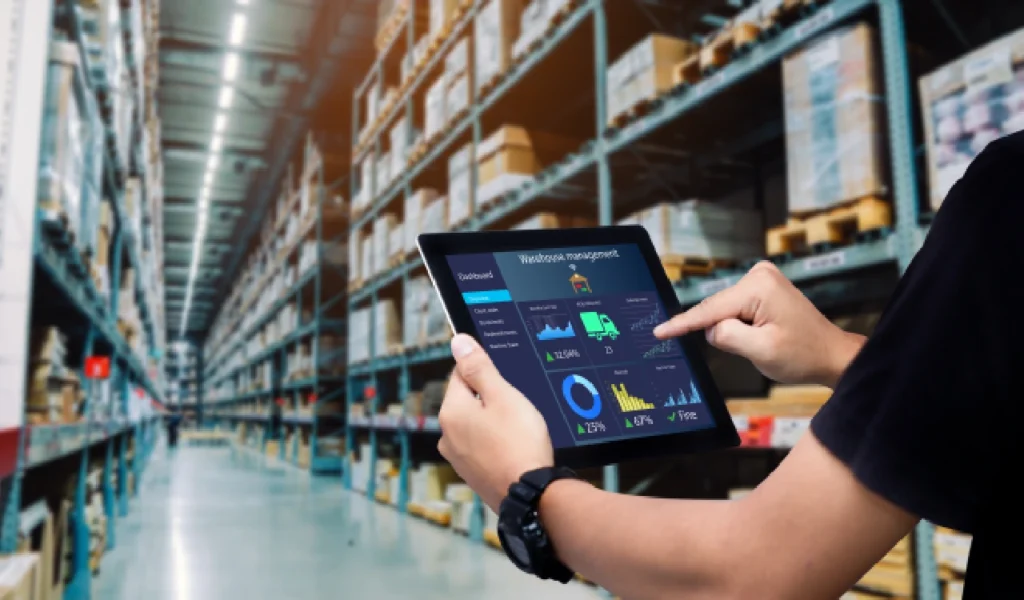
“69% of retailers using AI reported higher yearly revenue, and 72% reported lower operating expenses, according to NVIDIA's 2024 State of AI in Retail and CPG report.”
Retailers are rapidly scaling AI adoption. Walmart, for instance, is deploying AI agents like Sparky in its app and using AI in distribution centers to improve forecasting, cut waste, and optimize deliveries. H&M, meanwhile, has rolled out a GenAI-powered assistant to guide customers on sizes, outfits, and returns, driving faster responses and higher satisfaction.
With AI taking the front stage, every industry, be it retail, manufacturing, logistics, or life sciences, is rushing towards it. AI in retail, particularly, has emerged as a critical differentiator, helping enterprises move beyond just instinct, experience, customer behavior, or historical data. With AI, it is possible to combine all these signals with real-time data and predictive intelligence, turning retail supply chains from reactive systems into proactive, adaptive networks.
Rising consumer expectations, omni-channel complexity, labor shortages, and sustainability targets are pushing traditional operating models to the limit. Retail supply chains that still rely on static forecasting and rigid rules are stretched thin and unable to handle disruptions efficiently. For example, during the COVID-19 lockdown, fashion retailers relying on static forecasts were left with excess formal wear, whereas those that quickly shifted assortments matched demand and protected their margins.
This blog explores 10 practical use cases of AI in retail, from smarter inventory management to guided product discovery, and how these innovations are helping retailers move from pilots to measurable impact.
10 AI Use Cases in Retail Supply Chains
1. Inventory Management
Balancing stock has always been tricky and sometimes messy. Too much, ties up cash and too little frustrates shoppers. Instead of relying on seasonal averages, enterprises must tap into POS data, supplier lead times, and even weather forecasts, leveraging AI in retail. The impact is shelves stocked with the right amount of inventory, store by store, SKU by SKU. For example, fresh food retailers stop waste and save costs, cash and apparel chains make sure popular sizes stay in stock.
2. Price Optimization
Gone are the days when retailers used “markdown calendar schedules” to plan discounts and sales. Now, prices shift more dynamically, sometimes daily, sometimes hourly, based on demand patterns, competitor activity, and how much stock is left. It’s less guesswork, more micro-strategies running in the background. With AI strategies like dynamic pricing, customers see fairer prices, retailers protect margins, and fewer products end up stranded in clearance.
For instance, Syren’s price elasticity and promotion models let retailers adjust pricing store by store, aligning with local demand and competitors. This reduces blanket markdowns, protects margins, and improves sell-through.
3. Supply Chain & Logistics
Transport costs weigh heavily in retail. Smarter routing and predictive alerts are helping fleets run leaner. A truck caught in traffic is no longer a delay; it’s flagged before it disrupts store availability. Applying AI in retail can optimize delivery routes to reduce transit time, save fuel, time, and improve customer trust.
4. Demand Forecasting
The term 'demand forecasting' came to be widely used in the 60s in supply chain, retail, and production management. Historically, it means using years of data, market trends, and sometimes economic indicators to predict future customer demand.
It was largely statistical and linear. When layered with AI and machine learning, the scope of demand forecasting expands to real-time forecasting by ingesting live data such as POS transactions, weather, and social buzz. AI can give hyper-local and granular predictions right up to store and SKU-level, and even run scenario simulations like what-if models.

5. Assortment Planning
One-size-fits-all assortments rarely work. A downtown store might sell more grab-and-go packs, while suburban outlets lean toward family-sized bundles. AI-driven planning adjusts assortments at that micro level, it identifies patterns that are hard to spot, and the result is higher sell-through and lower waste because the mix actually reflects regional demand.
6. Visual Search and Curation
Your customer’s shopping behavior has changed; now they snap a photo and expect to find that item, or something close, instantly. AI-driven visual search tools make that possible. For supply chain teams, these searches are early demand signals that flow back into forecasting and assortment decisions.
7. Checkout Experience
Traditionally, checkout meant long queues, manual scanning, and delayed updates to inventory systems. With AI, the process is transformed. Computer vision and smart sensors now let shoppers simply pick up items and walk out, no scanning required. For retailers, every purchase is captured instantly, giving real-time visibility into inventory and sales, a leap from slow, error-prone reconciliations of the past.
8. AI-powered Chatbots and Virtual Assistants
Initially, chatbots were just FAQs with answers to predefined questions. Now, they handle delivery queries, suggest alternatives when something’s out of stock, and even track orders, making it one of the best Gen AI use cases in the retail industry. Every interaction adds to the dataset on customer preferences, and that loop improves planning over time.
9. Merchandising
Where your products sit still matters. By real-time analysis of traffic patterns, basket mixes, category performance, and sales data, AI can suggest how to arrange displays or refresh layouts. Sometimes, just moving items closer together can lift conversions in double digits, no extra SKUs required.
10. Product Discovery & Recommendation
Choice overload is real. Thousands of SKUs online and in-store can overwhelm even loyal customers and confuse them. Smart recommendation engines step in to guide discovery: curating bundles, highlighting complements, or simply surfacing what’s most relevant to that shopper. On the supply chain side, these signals are gold. When the same item pairings keep selling, procurement can adjust, ensuring shelves hold what people want.
How Syren Helps Retailers Move from AI Pilots to Scalable Impact
At Syren, we specialize in bridging the gap between AI promise and its ROI for retail supply chains. Here are some powerful use cases that have had a real impact on our customers.
Unified Data Foundations
- Unified Data Foundations: We build cloud-based, AI-ready data layers that consolidate POS, ERP, e-commerce, and logistics data into a single source of truth. For example, in customer profitability analysis and loyalty optimization, having a single source of truth ensures retailers target the right segments with the right offers.
- Customer & Marketing Analytics: Syren’s models for RFM-R segmentation, customer profitability, and churn prevention give retailers a deeper understanding of shoppers. By unifying POS, loyalty, and e-commerce data, we enable targeted campaigns that lift retention and increase lifetime value.
- Growth & Resource Optimization: Our distribution opportunity mapping, W@POS analytics, and trade promotion optimization frameworks help retailers cut costs while boosting service levels. With Syren’s cost-to-serve models, planners can balance efficiency with customer experience, even in volatile demand cycles.
- Pricing & Promotion: Syren’s price elasticity and promo optimization engines allow retailers to fine-tune strategies store by store, maximizing revenue while minimizing margin erosion. These models adapt dynamically to seasonality, competitor moves, and regional preferences.
- End-to-End Transformation: Beyond just algorithms, Syren delivers governance, integration with ERP/WMS systems, and change management. This enables faster rollout of price optimization and elasticity models, helping merchandising chains fine-tune promotions, reduce markdown losses, and lift margins within weeks.
- Scalable AI Architectures: All of this is underpinned by Syren’s AI-ready data platform with high observability and governance. Our modular designs on platforms like Databricks and Snowflake allow AI pilots to scale across geographies and channels without rework.
Building Smarter Retail Supply Chains with Gen AI
Adopting AI in the retail industry is a business advantage that can streamline inventory and demand forecasting to extend a hyper-personalized shopping experience. The question is how to implement AI in retail operations and integrate it into a supply chain that can think, learn, and react in real time.
That's where we come in. Syren’s Generative AI Services take retailers beyond point solutions by building integrated, intelligent workflows that extend from forecasting to logistics to merchandising to customer engagement. Our method combines data engineering, applied AI, and deep supply chain expertise to make sure businesses don't simply try AI but benefit from it right in their bottom line.


